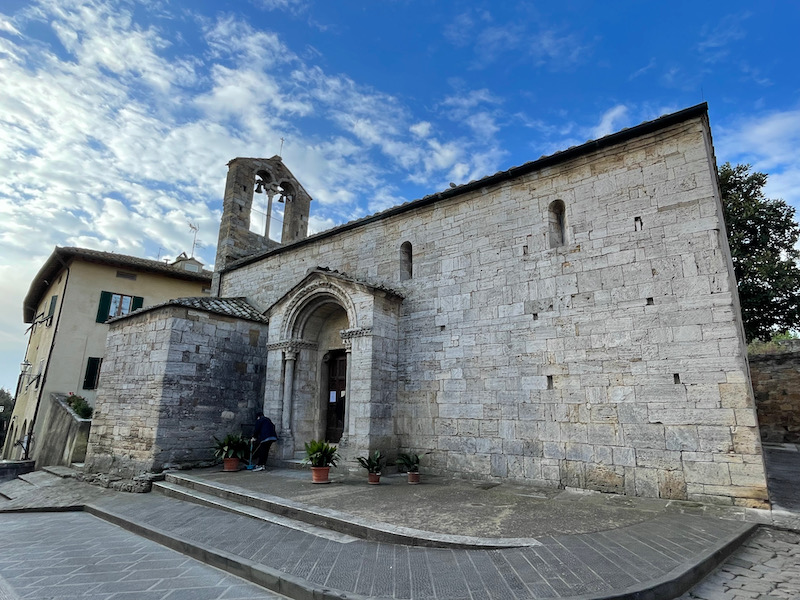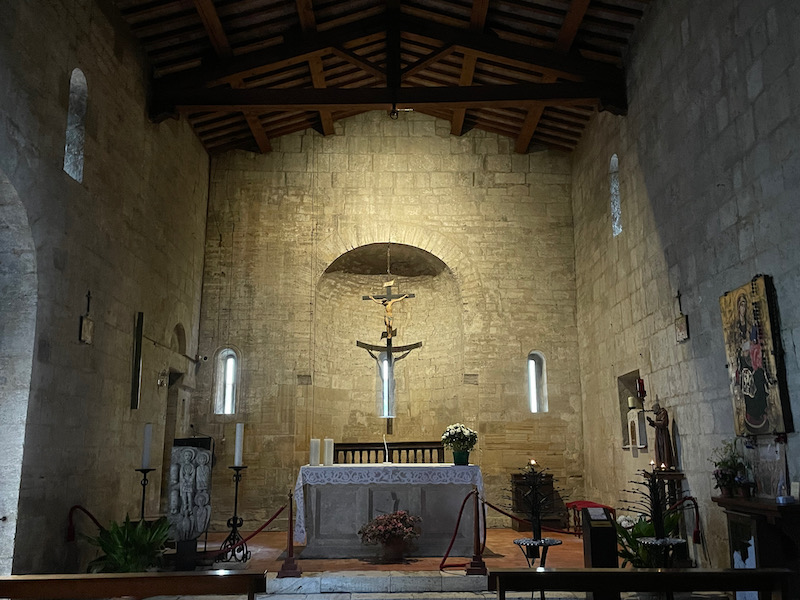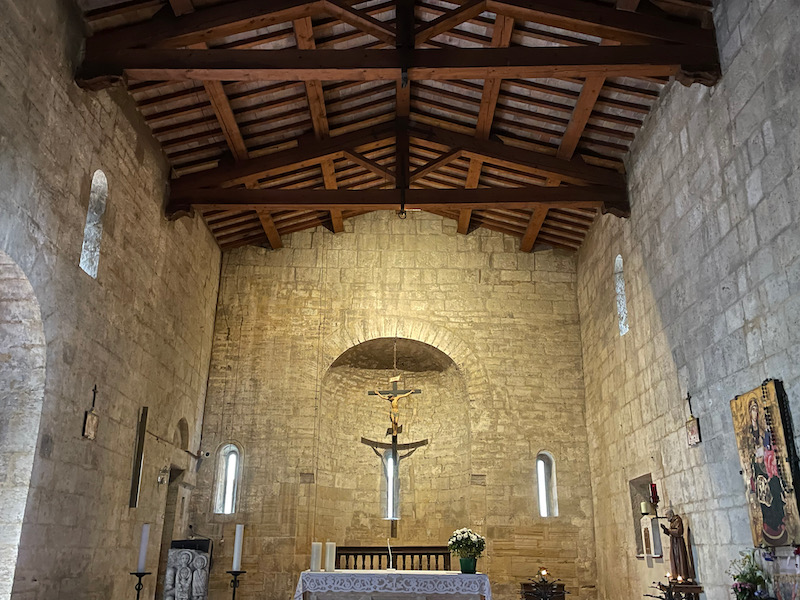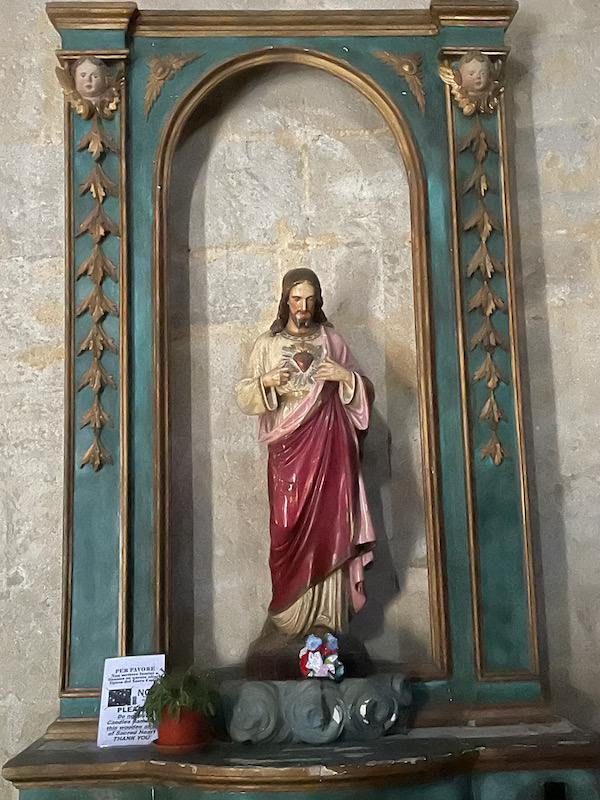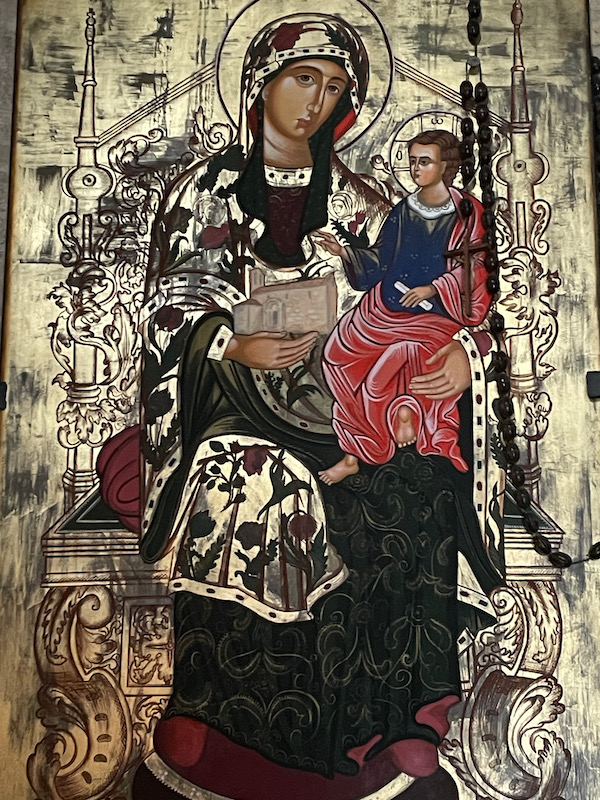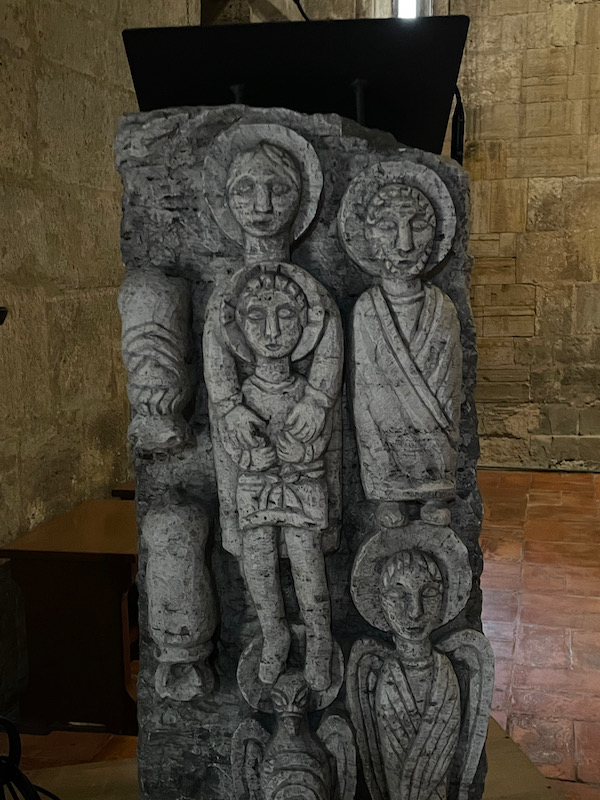Our Blog - Tuscany 2024 Trip - San Quirico d'Orcia, Italy
The village of San Quirico d'Orcia was a stop in the middle of a couple wine towns, and we only spent a few hours and one night here. It was somewhat interesting, with a few things to see. A Dutch scholar identified this village as being the Etruscan town of "Ena" mentioned in a book from the 3rd and 2nd century BC. During the Middle Ages, the "Via Francigena" which is a route that goes from Rome to Canterbury, England. The oldest detailed travel report dates back to 990 by Sigeric, the Archbishop of Canterbury. He was returning from Rome and kept a diary that describes the 79 stages of his itinerary (the diary is written in Latin and is now in the British Museum), including a stop here in San Quirico. There have been other pilgrimages on the Via Francigena, including a 12th century Icelandic abbot, and a couple in the 13th century. Similar to the Camino de Santiago de Compostela, this route can also be walked with signs pointing the way.
One of the squares in town, Piazza della libertà, sits at the entrance to an Italian garden and one of the gates of the city walls. You enter the Horti Leonini from the small doorway on the left. The Horti Leonini is a large Italian garden created at the end of 1500 by Diomede Leoni. The garden is divided into two parts: a higher section and a lower section, taking advantage of the natural elevation change of the land.
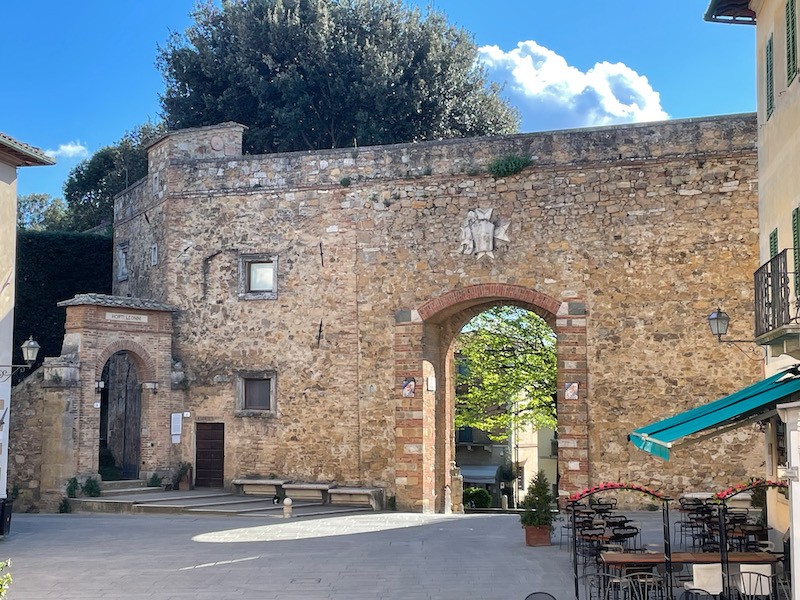
We are staying in one of the several options with the Capitano Collection, who seem to own several hotels, restaurants, and boutiques in town. When we checked in, they gave us a little ticket to get a free Prosecco at the bar in one of their other hotels. So Prosecco and chips! We also did a little shopping in their boutique.

There are quite a few historical buildings around town, this one seemed to call to me to take a picture.
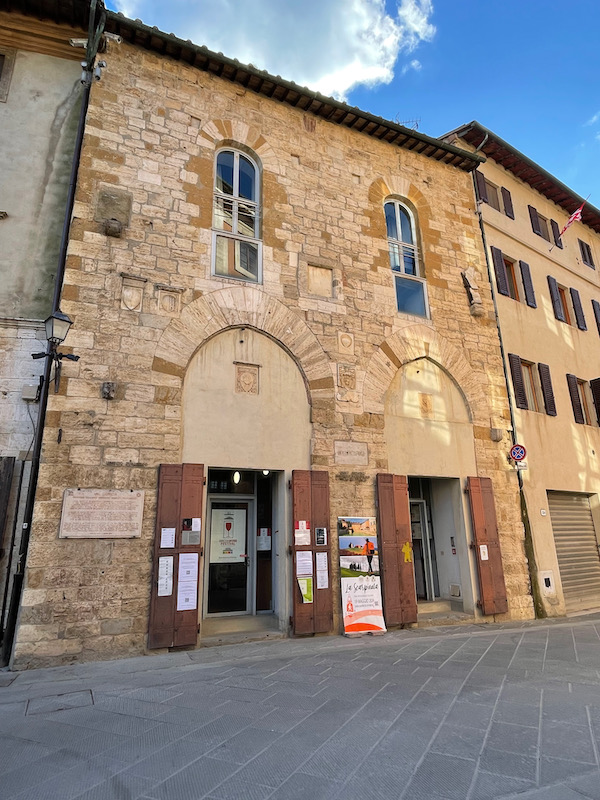
There are a few churches in town, but the more important one is the Collegiata dei Santi Quirico e Giulitta, or the Collegiate Church of Sant Quirico. Prior to this building, which was built in the 12th century, there was an older parish church and baptistery from the 8th century here.
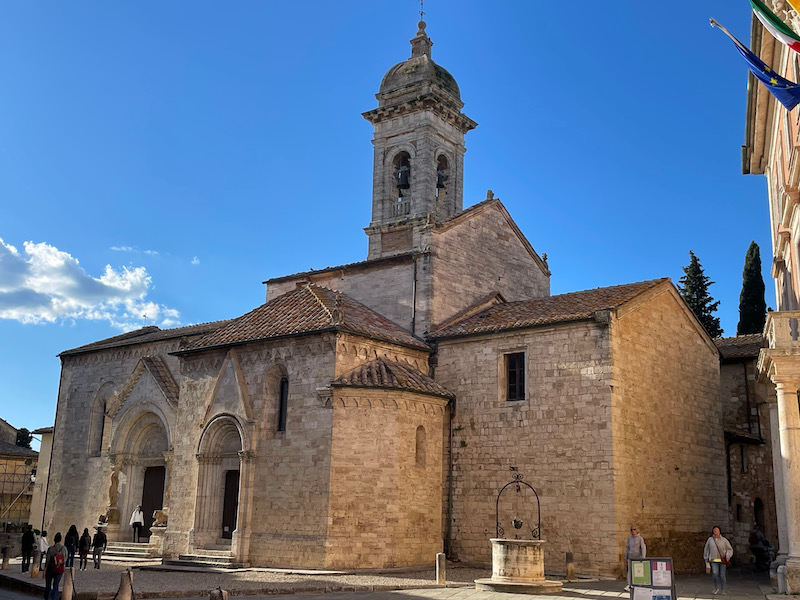
There are 2 side doorways that, while not as decorated as the main portal, still have some interesting items. One of them has nice arches while the other has two people resting on two lions.
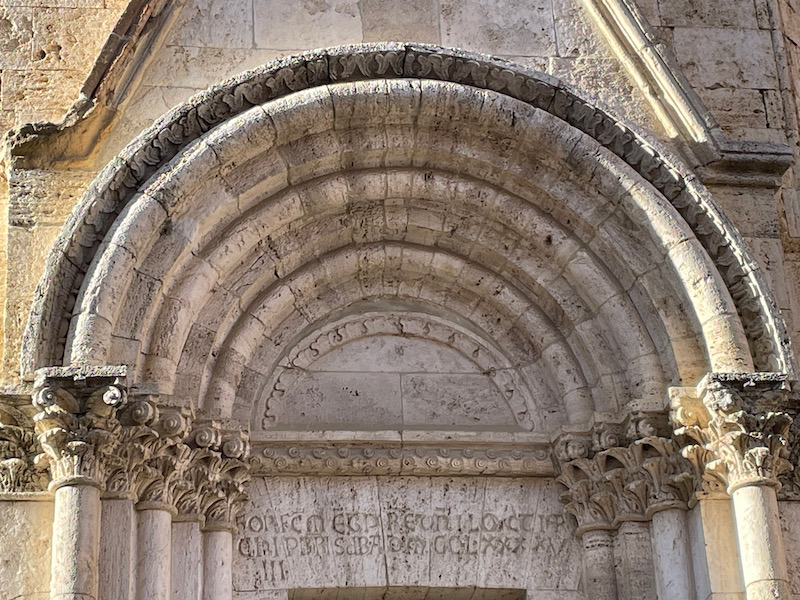
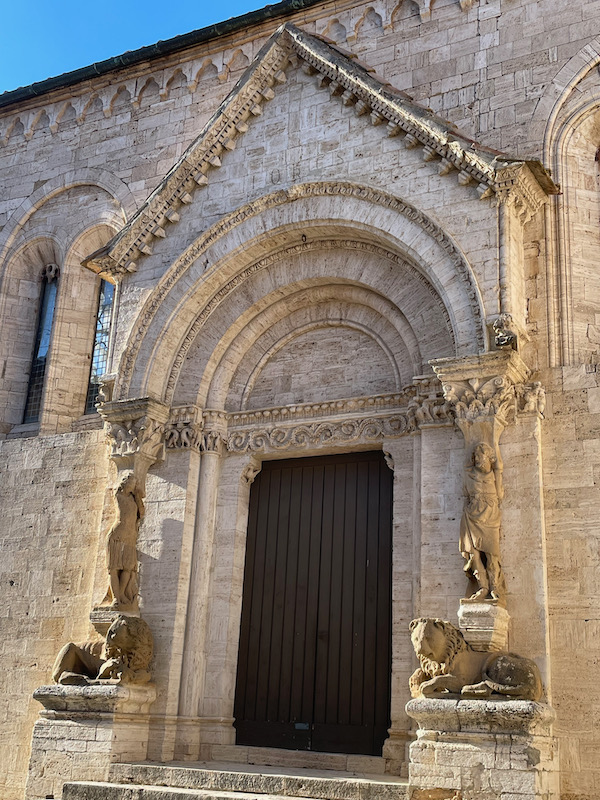
The main doorway is in Lombard style, also has some columns and arches, but the two crocodiles facing each other (done in sandstone) are the interesting part. Above them, in the center of the lunette, is a statue of a figure on a throne believed to be the effigy of San Damaso, but in reality, it is a representation of San Quirico, for whom the town is named.
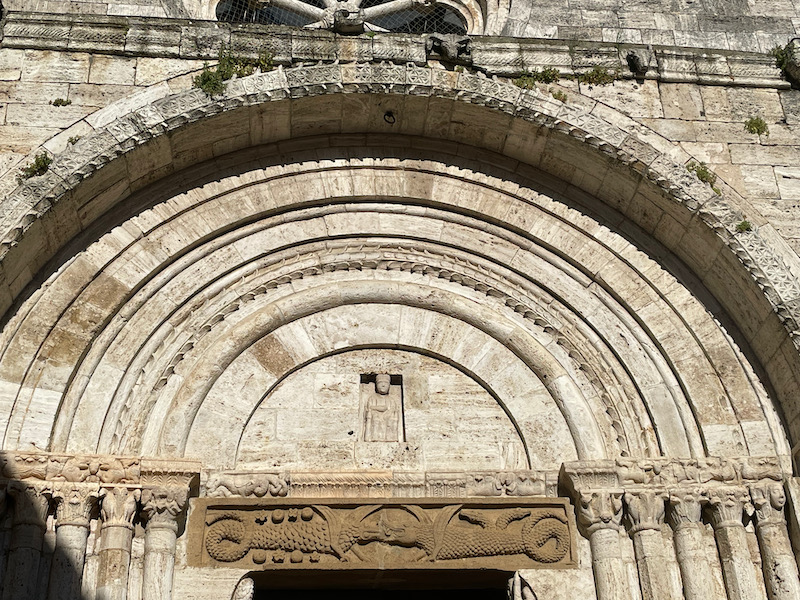
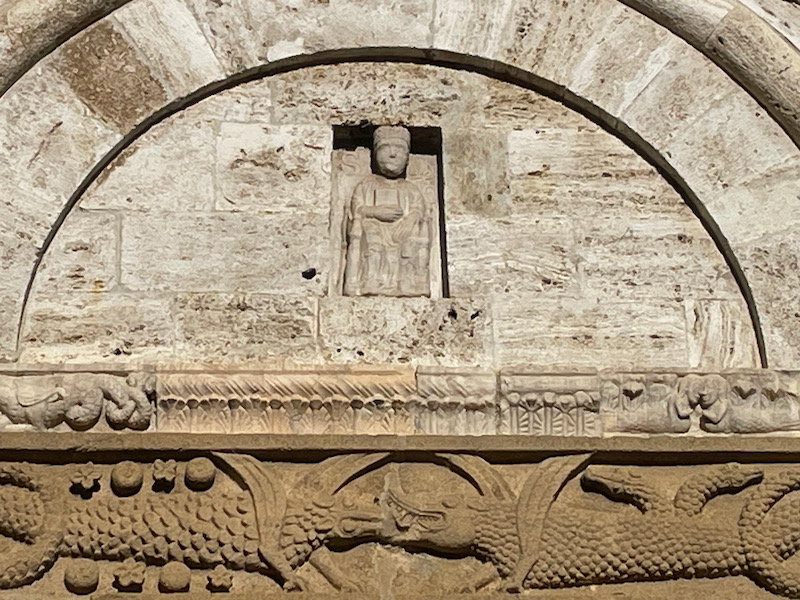
The inside is a single nave with a couple side chapels on the left. You can again see the wooden ceiling, typical of this area. The main altar is quite nice. It is Baroque/Rococo and dates to around 1655.
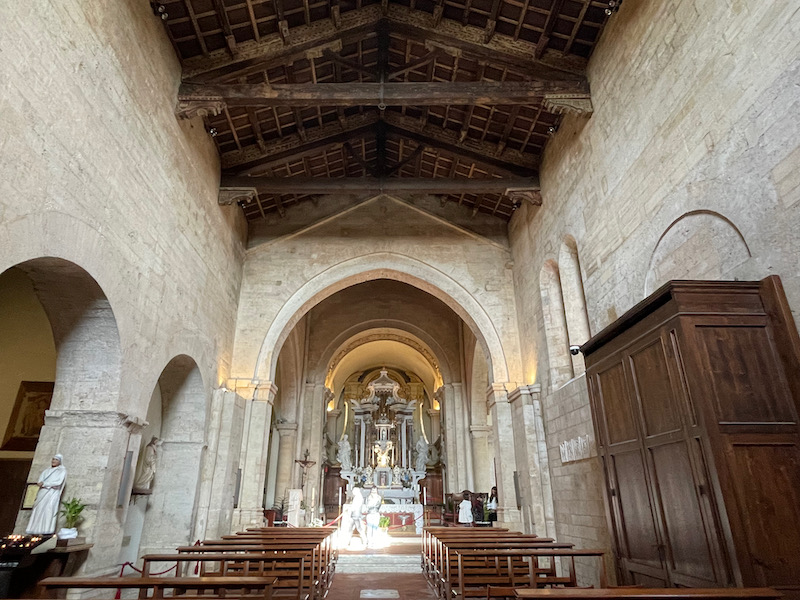
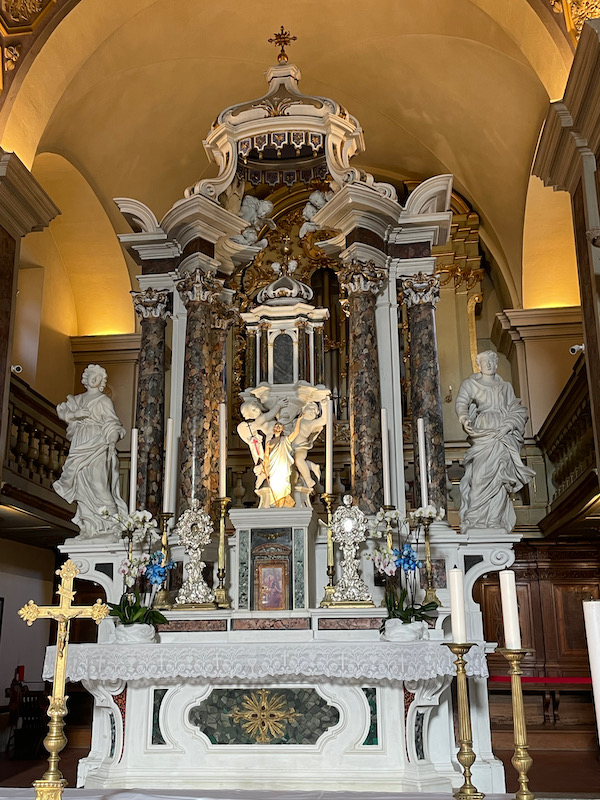
To the left of the main altar there is the large 15th-century altarpiece with the Madonna and Child, angels and saints (including Saint Quirico) on a golden background, created around 1470. In the lunette at the top are the Resurrection and Descent of Christ into Limbo. The coat of arms of the Municipality of San Quirico and five episodes from the Life of the Madonna are painted across the bottom.
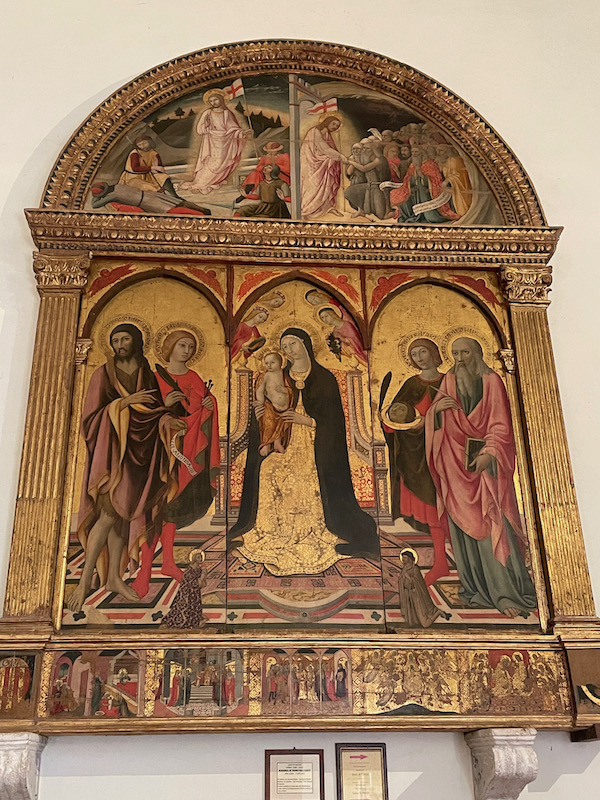
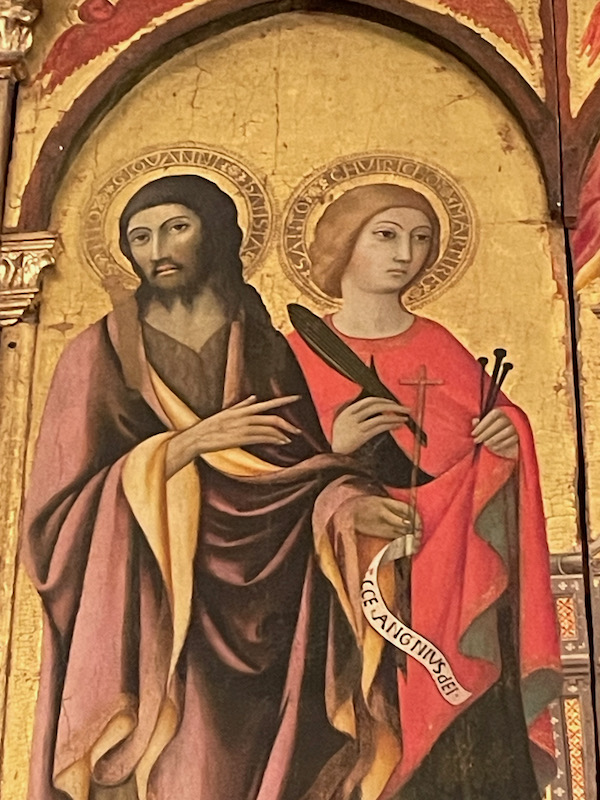
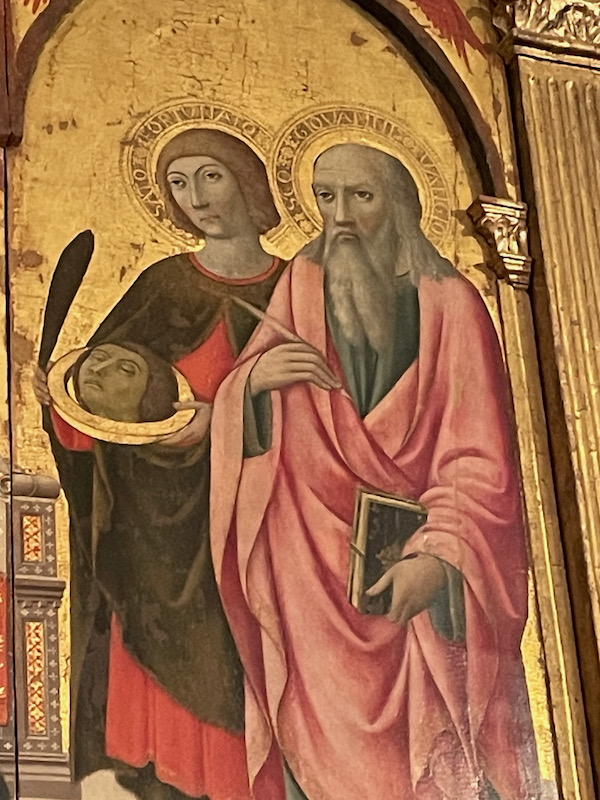
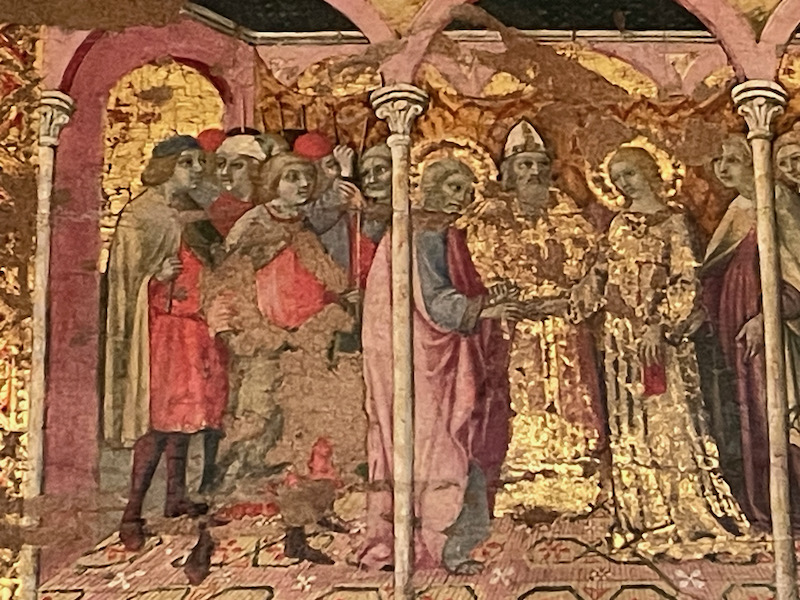
The city walls are still intact in a few areas, dating back to the 12th and 13th centuries.
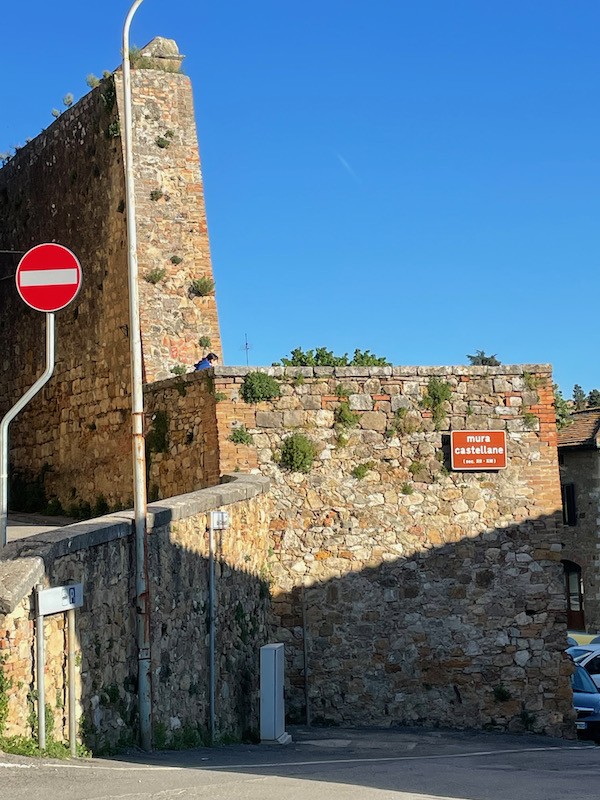
This little church was closed the day we arrived in town but was open when we were walking back from breakfast, so we popped inside. The Church of Santa Maria Assunta is also sometimes called Santa Maria ad Hortos because it was surrounded by gardens that would later become the Horti Leonini (a park that I didn't get pictures of). It is supposedly a sacred building situated along the Via Francigena and was probably constructed during the second half of the 11th century. I found it funny how tiny the current bells are compared to the opening for them in the bell tower. Very simple inside, again with the wood ceiling.
